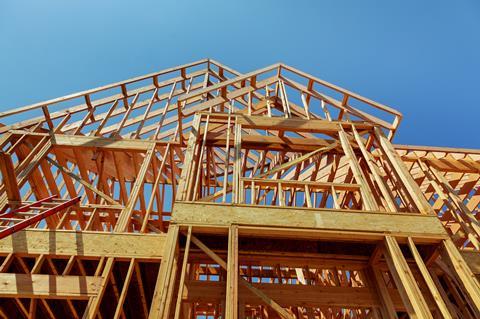While Paris’s COP21 was a pivotal moment, hosting the first built-environment-focused day at a COP event, Glasgow’s Cities, Regions and Built day next month has confirmed our sector as one of the most critical for the climate’s future.

Expanding the focus from tackling energy inefficiency to the total decarbonisation of the sector, including whole-life carbon reduction, is something industry pioneers have been championing, and the growing awareness of the importance of different material choices – as well as of how we build – is welcome.
Specifying sustainably sourced timber has three benefits. Firstly, as a naturally low-embodied-carbon material, it can help us meet Paris-aligned targets. Secondly, it locks carbon sequestered during the tree’s life into a long-life structure. Thirdly, driving demand for sustainable timber supply can encourage the regeneration and sustainable stewardship of our forests over the coming decades – one of our most effective climate change warriors.
It’s critical to raise the bar in all three areas, looking at the optimal mix of material solutions, increasing the circular use of timber to extend its carbon storage and pushing ever further with sourcing – using wood in construction as an economic driver for the highest-possible forestry standards.
Timber is both an ancient and a new building material. We see centuries-old piling emerging from the River Thames at low tide, testament to its durability. But what’s interesting to us is the amount of innovation, capital and energy now being put into mass timber and biobased materials – finding ways to improve its carbon sequestration even further, and conceiving product design and engineering solutions to increase its potential to be substituted for man-made materials. Inventive hybrid solutions, such as those that are part of CREE Buildings’ platform, are advancing our ability to build at scale – both vertically and in terms of unit delivery.
Net zero is a rallying concept – but it is half of the picture. As well as reducing emissions, we need to build in unison with nature to remove carbon dioxide from the atmosphere at scale.
The sector’s pioneering businesses are realising the potential of the timber building transformation and putting forests first. Global real estate and investment group Lendlease signed a partnership this month with leading supplier and product manufacturer Stora Enso to “focus on three key areas: R&D into sustainable timber products including cross laminated timber (CLT); new ways these products can be used in construction; and their accessibility in the global market”.
National and city leaders are also leading the way to more timber use: last week, the 32 municipalities of metropolitan Amsterdam committed to a minimum of 20% bio-based construction for all new projects; last year the French government ruled that from 2022, all new public buildings were to be at least 50% timber or other natural materials.
We urgently need to amplify, standardise and accelerate the use of timber as a ready-made part of the solution. To do this, it’s vital that collaborative networks are built, knowledge shared openly and supportive funding is available.
Backed by Laudes Foundation, Built by Nature is launching this week to assemble an ecosystem of actors pushing to scale the use of timber in our sector and to deepen its climate impact, sharing the efforts to tackle some of the remaining barriers – be they challenges of misconception, financing, regulatory or technological. We are launching an Accelerator Fund to give grants of €50,000 to €250,000 to consortia of organisations; funded projects could include designing new business models and collecting data; innovations and frameworks to increase the climate impact of timber buildings; or feasibility tests for large city-scale projects that start to shift the sectoral norm.
With new-build space expected to double globally by 2050, emissions from industrial building materials will deplete our remaining carbon budget unless we embrace a more regenerative way to build. We urge others to join us in this mission.
James Drinkwater is head of built environment at Laudes Foundation





























No comments yet